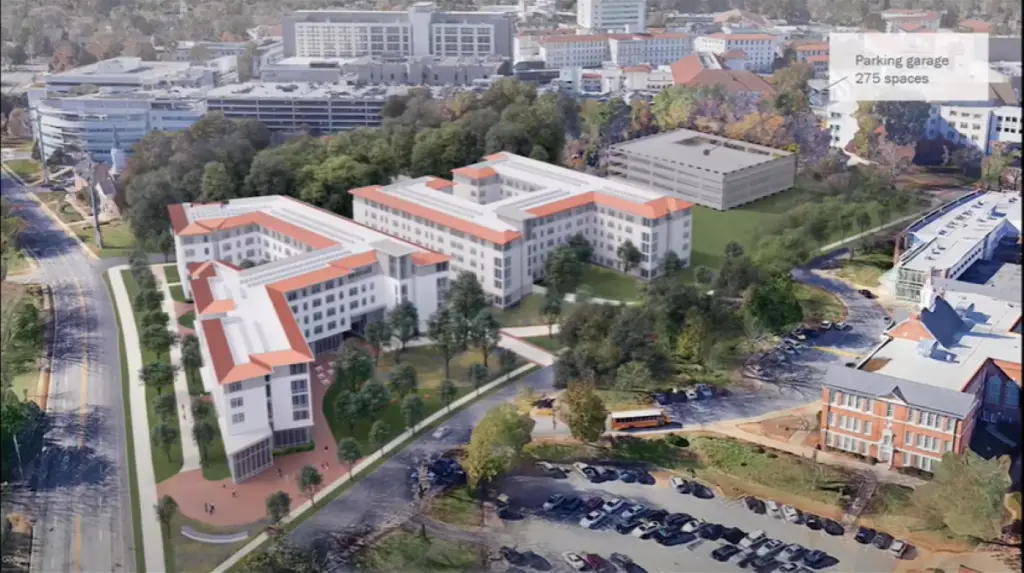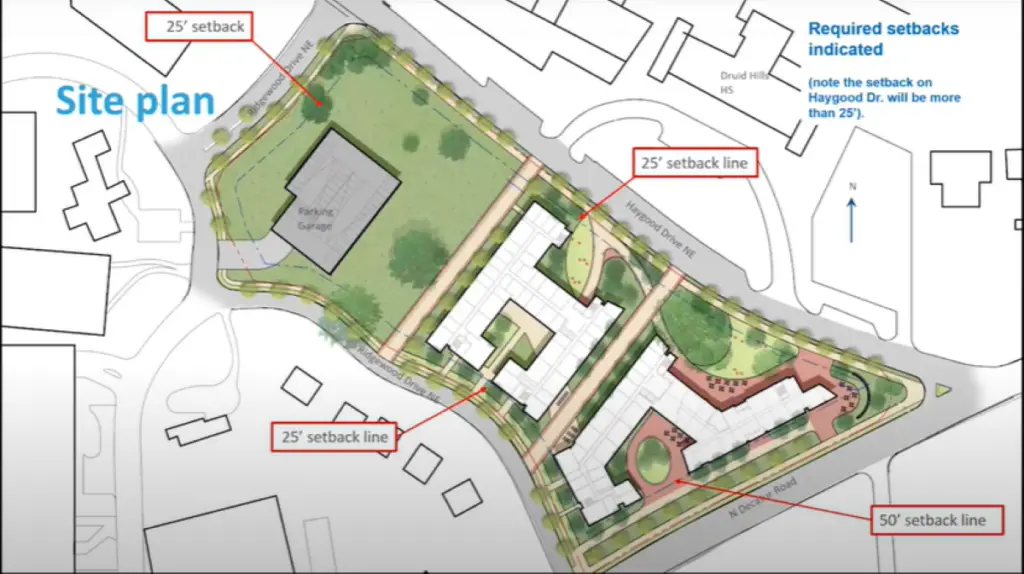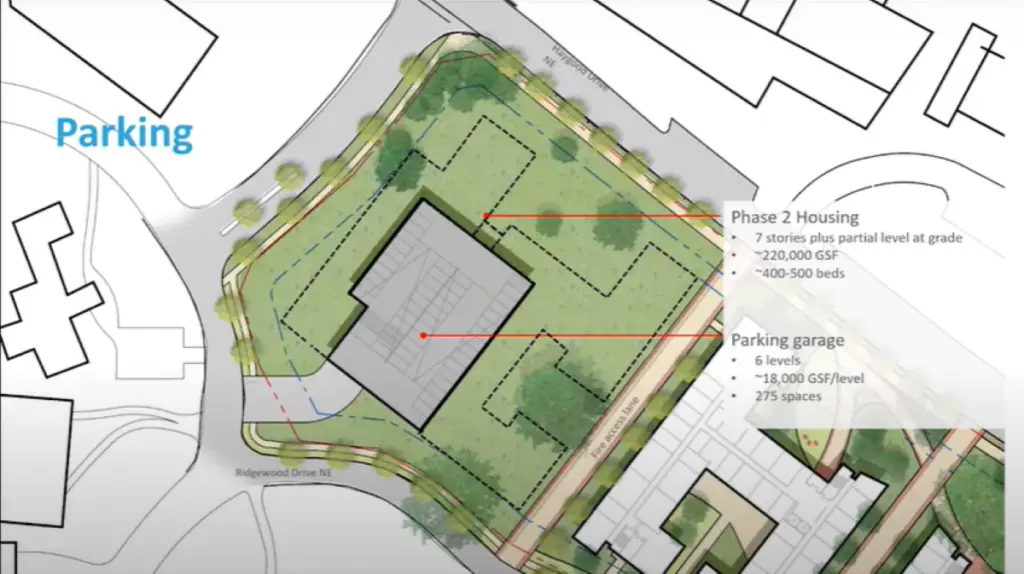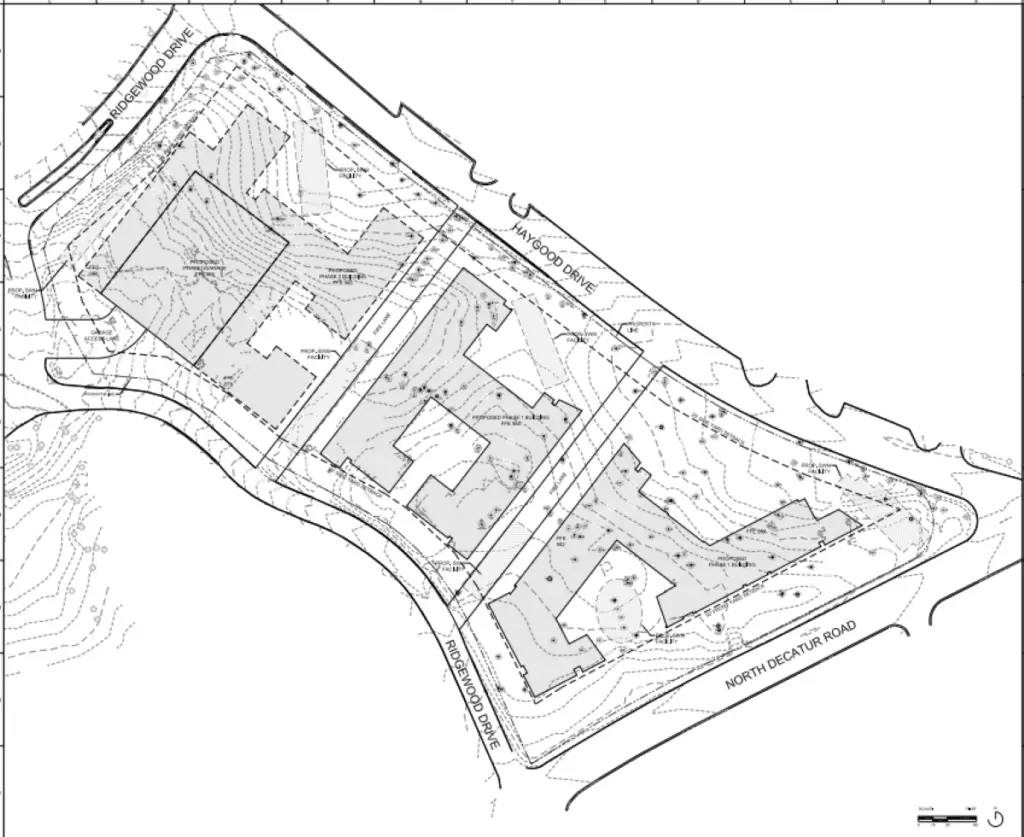Emory University‘s planned graduate student housing at Haygood Triangle took another step toward fruition today. The University has filed a rezoning request for their assemblage of single-family home parcels from R-4 to O-1 zoning, a major step to making their planned 1000-bed housing complex a reality. The rezoning case has a Zoning Review Board hearing date set for October 7th, 2021. The filing also indicates that a Comprehensive Development Plan will be required for the project to move forward.
Sign up now to get our Daily Breaking News Alerts
The University shared details for the project in a virtual public meeting in June, hosted by David Payne, Associate Vice President for Planning and Engagement at Emory University. The project would entail the construction of 800 residential units, or 1000 beds, in 3 buildings built in 2 phases.
The first phase would consist of two five-story buildings with approximately 400 units, including studios, one-bedroom, and two-bedroom units on the south side of the site. It would also include a six-story, 275-space parking deck on the northside of the site. The second phase would see the construction of a seven-story building around the parking deck, screening it from view from most angles.
Payne emphasized that the housing would be “ideal for students without cars” including the numerous international students who attend the university. Indeed, the location would mean a less than 15 minute walk to all of Emory’s main academic buildings, as well as direct access to the University’s most frequent shuttle routes. The project would also create 10 FT shared-use paths on both Haygood Drive and Decatur Road to replace the connectivity created by the PATH Foundation trail that currently runs through the site. The project reflects results from a “recent survey data from graduate students expressing a desire to live on-campus and, if possible, without a car” according to the project’s Georgia Community Affairs Development of Regional Impact Application.
The project is not without its detractors, most of whom cite the rapid development of Emory University and the City of Atlanta‘s annexation of the area as detracting from the community character. The University, for their part, is trying to limit impacts on the local community by not adding any additional curb cuts, maintaining deep setbacks and limiting parking on site to reduce the project’s impact on congestion. The project would require the demolition of several single family homes, however the historic 1848 North Decatur house is planned to be moved for preservation.

-
Facebook
-
Twitter
-
LinkedIn
-
Gmail

-
Facebook
-
Twitter
-
LinkedIn
-
Gmail

-
Facebook
-
Twitter
-
LinkedIn
-
Gmail

-
Facebook
-
Twitter
-
LinkedIn
-
Gmail






